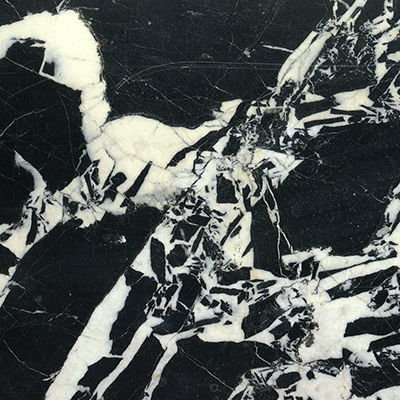Maison & Maison offers you the option of making your custom-made mantel out of one of the most prestigious marbles from the Pyrenees, the Grand Antique marble.
The Grand antique marble has been around since ancient times and was Jacques-Emile Ruhlmann material of preference for his Art Deco fireplaces.
Grand Antique marble is extracted in the Lez river valley near Aubert, southwest of Saint-Girons, in the Ariège Department of the Midi-Pyrenees. Called “Grand Deuil” (literally full mourning) in the nineteenth century, it has been around since Antiquity. First exploited by the Romans during the third century, it was then called “Marmor Celticum”. By this time it was exported to Rome and Constantinople in large quantities. Grand Antique was indeed very popular during the Byzantine period. It was used for to decorate the masterpiece of Byzantine architecture, Hagia Sophia in Istanbul. It was also widely used for pillars and columns. When the quarries were closed later in the Byzantine period, the existing architectural elements continued to be reused by Roman stonemasons. These pieces can be seen in many medieval and baroque churches in Rome. They were also used in the pietra dura workshops.
During the eighteenth century, the quarry of Aubert was reopened and lost again, according to Davila, in 1671. The quarry was again exploited in the nineteenth and throughout the twentieth centuries. Grand Antique was then widely used in France and exported around the world.
It is a well known marble and the most prestigious marble from the French Pyrenees. In Italian, it is called “Bianco e nero antico” or “Marmo di Aquitania”.
At the church of Saint-Louis-les-Invalides, in Paris, the pillars around the altar of the chapel are Grand Antique twisted columns. The tomb of Joseph Napoleon Bonaparte, in the same location, is also carved out of this marble. The base of the statue of St. Peter in Westminster Cathedral in London, is made out of Grand Antique marble, as are the columns of the cathedral in Tarbes, the four pedestals in the Salon of Diana in the Palace of Versailles. Finally, the three shafts of the columns in the baths of the Cluny Museum in Paris are made out of this same marble.
This highly decorative marble is mainly used for columns, wall lining and other architectural decorations, fireplaces, table tops and pietra dura.

